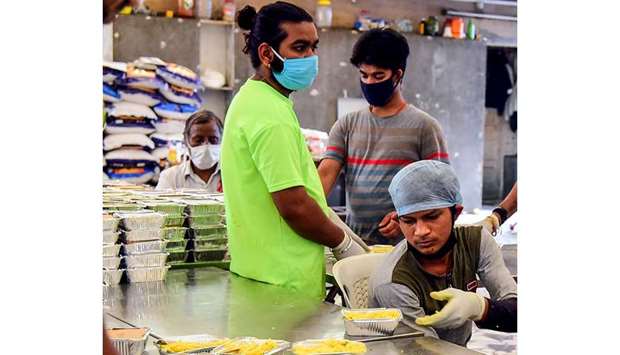In a first for the country, the Maharashtra government yesterday made face masks compulsory for all in Mumbai, Thane and Pune.
Officials said the measure was necessitated as studies have revealed that wearing facial masks can substantially reduce the spread of coronavirus from person-to-person contact, besides other mandatory social distancing measures already implemented.
Accordingly, the government has decreed that any one going out for whatever reasons must compulsorily wear a face mask.
This would also be applicable to all people moving around in their official or personal vehicles at any site, office or workplace, besides attending any gatherings or meetings at workplaces.
Earlier, BrihanMumbai Municipal Corporation (BMC) Commissioner Praveen Pardeshi issued an order that the regular 3-ply masks or cloth masks, either available at pharmacies or home-made which can be washed and reused after disinfecting them, must be worn while stepping out.
Shortly thereafter, Thane Police Commissioner Vivek Phansalkar also issued similar orders for the city.
These strict orders – with punitive clauses – came as Maharashtra continued to lead the country in terms of the maximum Covid-19 deaths (40) and positive cases (686) as on yesterday, with Mumbai and Pune being the worst-hit.
Mumbai’s Dharavi slum district yesterday reported the 13th case in the past five days.
State and civic health authorities are worried over the implications in the most congested locality on the planet which is also Asia’s biggest slum.
Despite the lockdown in place since March 25, in most parts of Dharavi, it is business as usual, prompting Health Minister Rajesh Tope to instruct police to “implement lockdown strictly” there.
“In Dharavi, the lockdown must be enforced strictly besides ensuring social distancing. The police must take it seriously and take stern measures,” he said.
However, the minister indicated it may not be necessary to completely seal Dharavi, though norms would be implemented strongly in view of the coronavirus pandemic.
Yesterday afternoon, there were shocking visuals of long queues of people awaiting their turn for collecting meals being distributed by some NGOs, and though most wore masks, there was little evidence of social distancing in the queues.
In the morning and evening, the streets seemed to be full and bustling with most activities in the region, with security personnel seemingly helpless to enforce the lockdown, and yesterday police were seen giving a friendly lecture and making some men do sit-ups for loitering around.
Started as a workers’ settlement 135 years ago, Dharavi – literally meaning ‘quick sand’ – covers just 2.25 sqkm housing over 200,000 families besides over 20,000 big and small businesses generating revenues of an estimated Rs7,000 crore.
“The biggest problem here is congestion. The people live or work in cramped quarters – 8 to 10 people in a 100-sq feet room, with common toilet facilities. How can there be social distancing in such conditions,” asked a local businessman Salim Shaikh, living in nearby Antop Hill.
Another problem is the dirt, squalor and unhygienic conditions that make it a sitting duck in case of any contagious outbreak or even fires.
Pradeep Sathyadas, who lives in Mahim, on the fringes of Dharavi, but commutes to work through Dharavi to Masjid
“I shudder to imagine what would happen here if the pandemic becomes more serious. It’s already teeming with people virtually 24x7, how can you control so many, where can you shift these lakhs of humans, even temporarily?” .
Both Shaikh and Sathyadas say that people from Dharavi move all around Mumbai and could pose a big health risk if the situation goes out of control.
Despite the squalid settings, people of all faiths live and work here harmoniously, eking out a living, some hand-to-mouth, and some literally minting money here while living in posh housing complexes elsewhere in the city.
Though Mumbai has so far recorded 782 positive cases, only 13 are from Dharavi, and of the 50 deaths, none from there.
Dharavi – the subject of several Indian (Dharavi, 1993 Hindi film, National Award Winner) and international (Slumdog Millionaire, multiple Oscar Award Winner) films and books (Gregory David Roberts’ bestseller Shantaram) – sprawls from Mahim on Western Railway to Sion-Matunga on Central Railway and spills over into many adjoining areas.

Volunteers from the Shree Vardhman Sthanakwasi Jain Shravak Sangh pack food to be distributed at Dadar area in Mumbai yesterday.

